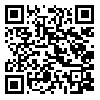BibTeX | RIS | EndNote | Medlars | ProCite | Reference Manager | RefWorks
Send citation to:
URL: http://tumj.tums.ac.ir/article-1-408-en.html
Normal 0 false false false EN-US X-NONE AR-SA MicrosoftInternetExplorer4 Telomere, by which is a terminal structure of eukaryotic chromosomes was discovered at first in 1938 and has a vital role in chromosome protection. Telomere in human and other vertebrates consists of thousands of 5′-TTAGGG-3′ tandem repeats at the end of the chromosome, has a main role in the chromosome stability. Telomere protects the end of the chromosome from degeneration, rearrangement and end to end fusion. There is a telomere loss at every cell division. Progressive loss in telomere length results in disassociation of telomere binding proteins and change in gene expression profiles. Adjacent genes are suppressed by the telomere effect so the telomere loss results in adjacent gene expressions. Apoptosis and replicative senescence are caused by progressive telomere loss. There are three mechanisms for increasing telomere length in eukaryotes and telomerase is the predominant mechanism. Telomerase can synthesize telomere, without the template. Telomerase is overexpressed In 90% of cancers. Therefore cancerous cells compensate the telomere loss in every cell division because of telomerase. In conclusion, telomerase is a proper target for cancer therapy and many methods including direct inhibition of telomerase and immunotherapy have been introduced.
| Rights and permissions | |
 |
This work is licensed under a Creative Commons Attribution-NonCommercial 4.0 International License. |





